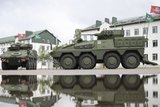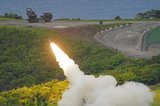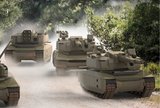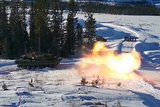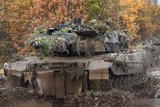British Army’s Challenger 3 undertakes qualification firings in Germany
The Challenger 3 MBT undertook live fire trials in Germany. (Photo: MoD/Crown Copyright)
The first live firings of the British Army’s next generation Challenger 3 MBT took place on 24 April with the platform firing rounds at targets from a range of distances to ensure accuracy.
Trials of the tank have been led by RBSL UK and Rheinmetall using the latter’s ranges in Germany for consistency with NATO Reference Standards for the latest 120mm L55A1 smooth bore gun and its suite of ammunition.
The firing trials followed an announcement earlier this month of the latest Challenger 3 tanks finalising production in Telford and the establishment of a joint endeavour to develop Remote-Controlled Howitzer 155mm (
Already have an account? Log in
Want to keep reading this article?
More from Land Warfare
-
![2025 land market review: British Army woes, European heavy armour and US MBT progress]()
2025 land market review: British Army woes, European heavy armour and US MBT progress
The last year has seen several major procurements in the land market. Shephard’s Dr Peter Magill reviews the main trends and themes in land procurement of 2025.
-
![Hungary set to begin using Hero 400 loitering munitions]()
Hungary set to begin using Hero 400 loitering munitions
Developed by Israel's Uvision and with systems being sold in the thousands to multiple European NATO countries and the US, the Hero family of loitering systems is also in production in the US and Italy, the latter through Rheinmetall.
-
![Croatia orders Leopards and CAESAR howitzers as Lithuania orders more CAESARs]()
Croatia orders Leopards and CAESAR howitzers as Lithuania orders more CAESARs
The Leopard is becoming the tank of choice in central and eastern Europe as Croatia joins Lithuania, the Czech Republic and Hungary in ordering the platform. Lithuania and Croatia have also signed for CAESAR howitzers.
-
![Light Reconnaissance Strike – enabling a vital mission set (Studio)]()
Light Reconnaissance Strike – enabling a vital mission set (Studio)
A new system-of-systems concept will unlock digital integration of sensors and weapons for Light Forces, allowing them to shape the battlefield environment on their own terms and upgrade legacy platforms.










